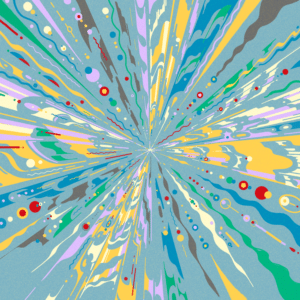Drawing on her experience as President of Bennington College from 2013–2019, Henry Luce Foundation President and CEO Mariko Silver shares her vision of how colleges and universities can better serve their students and society by emphasizing and fostering creativity—an increasingly important skill for today’s leaders.
According to Silver, solutions to many of the world’s most complex problems lie at the intersection of unassociated ideas—the intersection of science and art—and universities that are willing to break down academic silos and develop more interdisciplinary campuses, curriculums, and experiences will be most successful in preparing tomorrow’s problem solvers.
The piece below was published in The Future Universities Thoughtbook, a collection of essays that re-envision “the roles of universities, their relevance and their evolving position within the broader ecosystem of knowledge and innovation production.”
Colleges Should Prepare Students to Think Big
Higher education works best when it advances three fundamental goals: preparing future generations of leaders and problem-solvers, cultivating an ethic of shared responsibility, and empowering individuals to pursue paths of purpose and meaning. Colleges and universities should instill in young people the will and the skills to tackle the world’s most daunting problems and the intellectual fitness to manifest real solutions. Today, too much of higher education continues to ignore an essential ingredient to intellectual fitness: creativity. Colleges must be laboratories for the imagination, and only those that are brave enough to invest in this frontier will be host to tomorrow’s big ideas.
Creative Thinking Can Be Cultivated Through Campus Spaces and Curriculum
The good news is that imagination and creativity can be cultivated, and no institution is better suited for the job than higher education. Creativity as a cognitive function is understood as the ability to combine apparently unrelated things to generate something novel. Like intelligence, its cognitive sibling, creativity is a teachable trait, enhanced by cultivating more cooperation between the parts of our brain responsible for imaginative processes and those responsible for cognitive control. Further, research suggests that people with highly active “default networks” – or daydreaming states, the ability to let the mind roam – tend to also exhibit extraordinary insights. In other words, it’s not enough to simply know a lot of facts, we must also have enough robust brain activity to draw new connections among those facts. Innovations live at the intersection of previously unassociated ideas.
The intersecting of disparate fields has not, historically, been encouraged by academically siloed and physically segregated college experiences. But when colleges resist the practice of putting, for example, all the science classes in one building and the art classes on the other side of campus – and increasingly more colleges are resisting this practice – they can create environments where divergent ideas and approaches are regularly bumping up against each other, daring students to recognize their potential for interaction. More importantly, when coursework facilitates the mingling of science and art (and philosophy, mathematics, literature, etc.) inside the classroom, it encourages one of the most essential functions of both creativity and intelligence: divergent thinking.
The most complex problems facing humanity today – for example climate change, human migration, and threats to democracy – are too vast and interconnected to be solved by government or private sector action alone. They require long-term thinking and near-term investments of time, resources, and intellectual rigor.
“Colleges and universities are best-suited to lead on such complex problems, but only those that cultivate environments for imaginative, inventive, and wildly collaborative engagement stand a chance of generating real solutions”
It is not enough to teach our students to identify discrete problems in the world and then try to fix them. We need future leaders who are capable of recognizing where entire systems of organization are failing, where the underlying principles are wrong or obsolete. We need to give our students the tools both to improve what exists and to imagine something wholly new. That includes arming them with the ability to recognize supposedly-fixed ideas as inventions themselves – everything from nation-state borders to our K-12 education model and the literary canon. These are not inevitable fixtures, but moveable objects. Most of us spend our formative years as editors – tinkerers at the edges of existing things – but the world needs more writers of original ideas, and colleges should be their proving ground.
In practice, this means designing (or redesigning) a college pedagogy that is interdisciplinary. At Bennington College, each student develops the trajectory for their unique education, fusing various disciplines and refining their plan as they move through courses, work experience, and co-curricular engagement with faculty and other students. The potential for innovation is infinite because no new combination of ideas is off-limits, provided a student can craft a robust intellectual case for its pursuit. The arts are not cordoned off from, or sublimated to, other disciplines; and every discipline is understood as interconnected – in still-undiscovered ways – to every other.
Visionary Colleges Empower Graduates to Build a Better Future
This is a uniquely fluid moment for institutions of every kind, as democracies falter in select regions, and climate change exacerbates human conflict and forced migration. Moments such as these are ripe for change in multiple directions because we are reminded of just how moveable institutions like nation-states, governing bodies, and economic models are. Colleges can take this opportunity to challenge traditional orthodoxy about what, and for whom, they exist.
Start with your ideals. The founders of Bennington College envisioned a more just, sustainable, and inspired tomorrow; and with boundless imagination, they built a pedagogy that worked backwards from there to foster an unrelenting ambition to advance those ideas in the world. Every change and addition made on campus since then has been an extension of that vision and a rededication to a place of possibility. We aren’t the only school that does it this way. A creative, interdisciplinary, and student-directed college experience need not be limited to only the radical few, or even the liberal arts.
Real solutions to the most urgent challenges before us will only be born of unexpected, risky, imaginative thinking. It’s our job to create the right conditions.
Sign up for updates
Explore Themes and Ideas































































